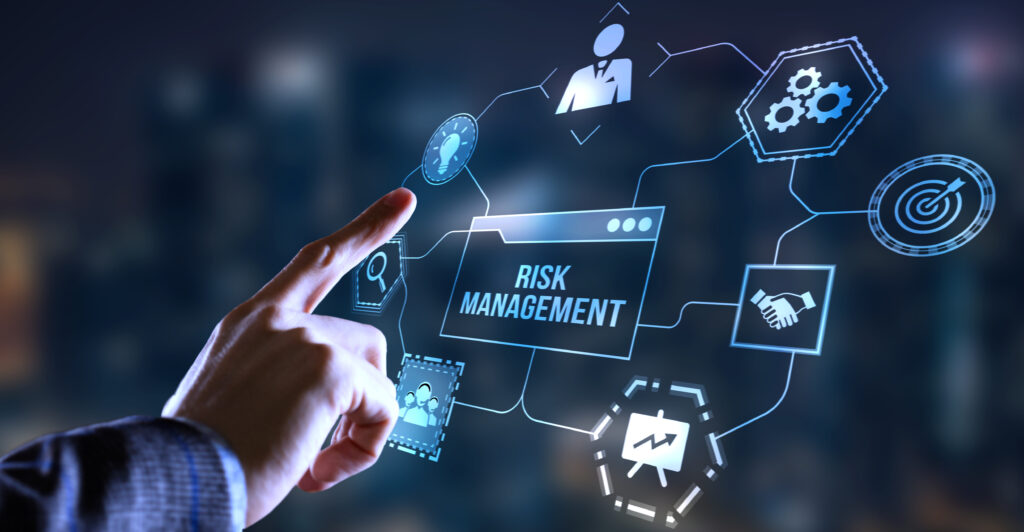In the ever-evolving world of cybersecurity, 2024 has unfurled a tapestry of digital threats that can leave even the most robust businesses vulnerable. I remember a time, not so long ago, when cybersecurity was often an afterthought, a checkbox in the long list of business needs. But today, as I interact with businesses of various sizes, from nimble startups to sprawling corporations, the story is starkly different.
Cybersecurity has catapulted to the forefront of business strategy, and it’s not hard to see why.
Just last year, we all witnessed several companies and organizations grappling with a sophisticated cyber attack that nearly crippled their operations. The Royal Mail, The US State and Commerce Departments, the UK Electoral Commission, T-Mobile and even the Weather Network here in Canada are just some of the companies critically affected by cyber incidents in 2023. It was a wake-up call, not just for them but for everyone in their respective industry. This incidents underscored a crucial reality: in the digital age, your cybersecurity posture is as vital as your business plan. The objective of this article is straightforward – to arm you with key strategies that fortify your digital defenses, no matter the size of your enterprise. Let’s dive into the world of cybersecurity in 2024 and explore how you can shield your business from the invisible bullets of the digital realm.
- Understanding the Current Cybersecurity Threat Landscape
Embarking on this journey, we must first acknowledge a fundamental truth: comprehending the threat landscape is a critical step towards effective defense. In 2024, the cyber threat environment has become increasingly complex, marked by a rise in sophisticated phishing schemes, advanced ransomware, and state-sponsored cyber activities. These threats are indiscriminate, targeting businesses across all sizes and industries.
What’s crucial here is staying informed. In the realm of cybersecurity, ignorance isn’t bliss; it’s a liability. Keeping abreast of the latest threats is essential. This means regularly subscribing to cybersecurity updates, attending industry webinars, and participating in forums. This isn’t just about gathering information; it’s about building a mindset attuned to the ever-changing nature of digital threats.
The second key takeaway is to never underestimate the creativity and persistence of cyber adversaries. They are continually crafting new tactics to bypass even the most sophisticated defenses. This reality demands that our approach to cybersecurity be dynamic, evolving continually to counter new threats. It’s not just about building a wall; it’s about anticipating how that wall could be climbed and reinforcing it accordingly. - Comprehensive Risk Assessment and Management
In the world of cybersecurity, risk assessment isn’t just a one-off task; it’s an ongoing process, akin to routine health check-ups for your business. The goal is to identify potential vulnerabilities before they become gaping holes that attackers can exploit.
Start by mapping out all your digital assets – from your customer databases to your internal communication tools. Understanding what you need to protect is the first step. Then, assess the vulnerabilities associated with each asset. This isn’t just about software weaknesses; it also includes examining employee practices, third-party vendor risks, and even physical security measures.
But here’s where many businesses stumble – risk management isn’t just about identifying risks; it’s about prioritizing them. Not all vulnerabilities are created equal. Some pose existential threats to your business, while others might be minor. Prioritizing helps you allocate resources more effectively.
And remember, risk management is not a static process. The digital landscape is like shifting sands – what’s secure today may not be tomorrow. Regularly revisiting and updating your risk assessment is crucial. Just as a physician would adjust treatments based on new health data, your risk management strategies must evolve with the changing threat environment. Think of it as a living document, one that adapts and grows as your business and the digital landscape do. - Implementing Strong Network Security Measures
In the diverse digital landscape of 2024, network security transcends the traditional confines of a physical perimeter. With the proliferation of cloud environments, mobile access, and remote contributors, securing your network demands a more holistic and flexible approach.
The era of solely relying on perimeter defense is over. Instead, we embrace a multi-layered strategy that accounts for various entry points. This begins with ensuring robust security in your cloud infrastructure. Cloud security involves not just protecting data at rest but also securing data in transit and managing access controls. It’s crucial to know well every security feature provided by your cloud service providers to understand how their offerings can be leveraged to improve your security posture.
In the context of mobile and remote access, the concept of a VPN takes on a new dimension. VPNs are more than just a tool for secure connections; they’re a critical component in ensuring secure remote access to your network. They create encrypted tunnels for data transmission, shielding sensitive information from potential interceptors.
But there’s more to it than just encryption. Implementing a Zero Trust security model, where trust is never assumed and verification is required from everyone trying to access resources in your network, becomes increasingly important. This model is particularly effective in managing the security risks associated with remote access and BYOD (Bring Your Own Device) policies.
Lastly, the maintenance and evolution of network security measures are vital. This involves regular updates, vulnerability patching, and a dynamic review of security policies to cater to the ever-changing landscape of cyber threats. It’s about creating a responsive and adaptable security ecosystem that can protect your digital assets, regardless of where they reside or how they are accessed. - Data Protection and Encryption
In the digital age, data is a valuable asset, often referred to as the new oil. Protecting this asset is paramount, regardless of your organization’s size or industry. As we navigate through 2024, the emphasis on data protection and encryption has never been more critical, especially given the increasing risks of data breaches and cyber attacks.
Encryption is the cornerstone of data protection. It’s like turning your sensitive data into a cryptic puzzle that can only be solved with the right key. Ensure that all sensitive data, whether at rest (stored on your servers) or in transit (shared over the internet), is encrypted. This includes customer information, employee records, intellectual property, and any other confidential data.
But encryption alone isn’t enough. It’s essential to implement robust access controls. Not everyone in your organization needs access to all types of data. Implementing a ‘least privilege’ access model ensures that individuals have access only to the data necessary for their job functions. This minimizes the risk of internal data breaches and reduces the potential damage in case of an account compromise.
Data protection also extends to backup and recovery. In the event of a data loss scenario, whether due to a cyber attack or a technical failure, having a secure and up-to-date backup can be the difference between a minor setback and a catastrophic business failure. Your backup strategy should include regular backups, secure storage (preferably off-site), and regular testing to ensure data can be effectively restored.
Moreover, in today’s interconnected world, data protection is not just an internal matter. If you work with third-party vendors or service providers who handle your data, it’s crucial to verify that they also adhere to stringent data protection standards. Conduct regular audits and assessments to ensure compliance with your data security policies.
In summary, data protection in 2024 requires a comprehensive approach: encrypting data, controlling access, ensuring effective backup and recovery processes, and extending data security practices beyond the boundaries of your organization. This multi-faceted approach is key to safeguarding your most valuable digital assets in an increasingly complex cyber landscape. - Employee Training and Awareness
A robust cybersecurity strategy is incomplete without addressing the human element. Employees can be your first line of defense or your weakest link. In 2024, fostering a culture of cybersecurity awareness across all levels of your organization is crucial.
Regular training programs are essential. These should cover not just the basics of cybersecurity but also the latest trends and threats. Interactive sessions, workshops, and even simulated phishing exercises can be highly effective. The goal is to make cybersecurity part of the daily conversation, not just a topic that comes up during annual training.
Empower your employees to be vigilant. Encourage them to report suspicious activities and provide clear guidelines on how to handle potential security incidents. Remember, a well-informed employee can prevent a disaster. - Embracing Advanced Cybersecurity Technologies
The technological landscape is continually evolving, and so are the tools and techniques for cybersecurity. In 2024, leveraging advanced technologies is not just an advantage; it’s a necessity.
Artificial Intelligence (AI) and Machine Learning (ML) are game changers in detecting and responding to cyber threats. They can analyze vast amounts of data to identify patterns and predict potential threats before they materialize.
Cloud-based security solutions offer flexibility and scalability. They provide access to advanced security tools without the need for heavy infrastructure investment, which is particularly beneficial for businesses that lack the resources to maintain a large in-house security team.
However, technology alone isn’t a silver bullet. It needs to be integrated thoughtfully into your overall cybersecurity strategy, with proper training and processes to ensure its effective use. - Regulatory Compliance and Legal Considerations
Navigating the complex landscape of cybersecurity laws and regulations is more critical in 2024 than ever. Compliance is not just about avoiding legal pitfalls; it’s about building trust with your customers and partners.
Understanding the regulatory requirements for your specific industry and region is the first step. Whether it’s GDPR in Europe, HIPAA in the healthcare sector, or any other regulation, non-compliance can result in hefty fines and damage to your reputation.
Implement a compliance program that includes regular audits, employee training, and a clear understanding of data handling and reporting obligations. In case of a data breach, knowing the legal steps to take is crucial.
Collaboration with legal experts specializing in cybersecurity laws can provide valuable insights and help you navigate this complex area more effectively. Compliance is an ongoing process, and staying updated on legal changes is vital for maintaining a robust cybersecurity posture. - Developing an Incident Response Plan
Having an incident response plan is not just a best practice; it’s a necessity in 2024. This plan is your playbook for what to do in the event of a cybersecurity breach. It should outline clear procedures for response, communication, and remediation.
Key components of an effective incident response plan include identification of key roles and responsibilities, communication protocols, and steps for containment, eradication, and recovery. This plan should be tailored to your organization’s specific needs and resources.
Regularly testing and updating your incident response plan is crucial. Conducting drills and simulations can help identify gaps and ensure that when a real incident occurs, your team knows exactly how to respond efficiently and effectively. - Partnering with Cybersecurity Experts
Even with the best in-house efforts, there are times when partnering with external cybersecurity experts is the smart move. These experts bring specialized knowledge and experience that can significantly bolster your cybersecurity posture.
When choosing a cybersecurity partner, look for expertise that complements your internal capabilities. This partnership can range from consulting on specific security strategies to outsourcing certain security functions.
A good cybersecurity partner should not only help you in responding to incidents but also in proactively strengthening your defenses. They can provide insights into the latest threats and trends, and help you stay one step ahead of potential attackers. - Continuous Monitoring and Improvement
Cybersecurity is not a set-and-forget affair. It requires continuous monitoring and regular improvement. Implement systems that provide real-time insights into your network and system activities. This enables you to detect potential security incidents before they escalate.
Stay informed about the latest cybersecurity technologies and practices. The cyber landscape changes rapidly, and what worked yesterday may not be sufficient tomorrow. Regularly review and update your cybersecurity strategies to reflect these changes.
Encourage a culture of continuous learning and improvement within your organization. Cybersecurity is a collective responsibility, and everyone should be encouraged to contribute ideas and insights.
Conclusion
As we navigate the complexities of the cyber world in 2024, it’s clear that enhancing our cyber defense requires a multifaceted approach. From understanding the threat landscape to embracing advanced technologies and ensuring regulatory compliance, every aspect plays a crucial role.
Remember, cybersecurity is an ongoing journey, not a destination. It requires vigilance, adaptability, and a proactive mindset. By implementing these key strategies, you can build a resilient cybersecurity posture that not only protects your organization but also supports its growth and success in the digital age.
Call to Action
Take the time to assess your current cybersecurity posture and identify areas for improvement. Consider scheduling a consultation with a cybersecurity expert or arranging advanced training for your team. Your proactive steps today will fortify your organization’s defenses for a more secure tomorrow.





